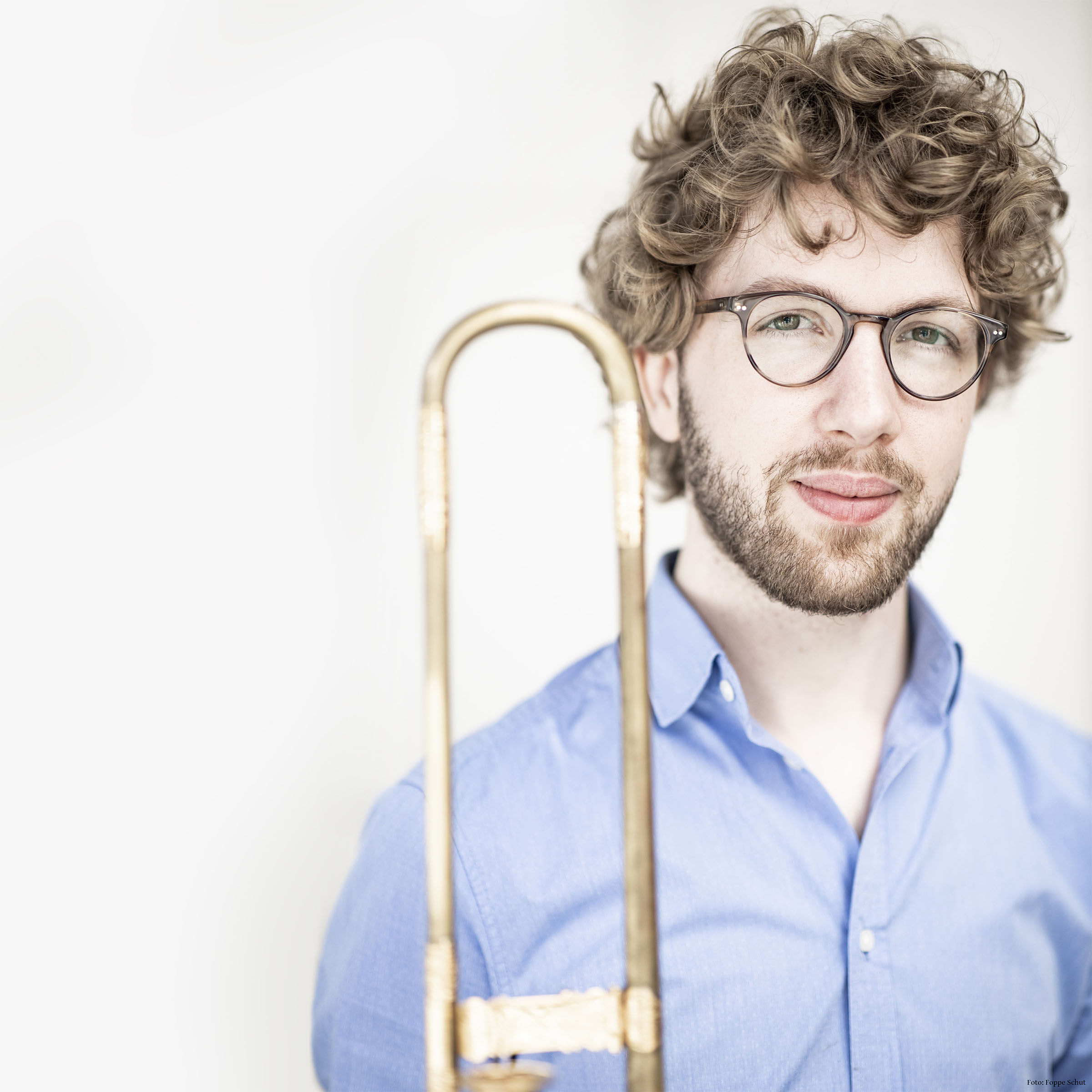biography
 Matthijs van der Moolen loves playing chamber music, both early and contemporary. He graduated cum laude from his studies of baroque trombone with Charles Toet at the Royal Conservatoire of The Hague, and specialised into renaissance music on trombone and slide trumpet even further with Catherine Motuz at the Schola Cantorum Basiliensis. Matthijs plays with various ensembles, including Música Temprana, Bach Collegium Japan, Holland Baroque, Capriccio Stravagante, New Collegium, La Fonte Musica, Innsbrucker Hofmusik, Cappella Marciana (San Marco, Venice), Ghislieri Consort, and others.
Matthijs van der Moolen loves playing chamber music, both early and contemporary. He graduated cum laude from his studies of baroque trombone with Charles Toet at the Royal Conservatoire of The Hague, and specialised into renaissance music on trombone and slide trumpet even further with Catherine Motuz at the Schola Cantorum Basiliensis. Matthijs plays with various ensembles, including Música Temprana, Bach Collegium Japan, Holland Baroque, Capriccio Stravagante, New Collegium, La Fonte Musica, Innsbrucker Hofmusik, Cappella Marciana (San Marco, Venice), Ghislieri Consort, and others.
Together with Anne-Linde Visser and Elise Dupont he co-founded the Castello Consort. With this ensemble, they specialise in the expressive and virtuosic (chamber) music of the sixteenth and seventeenth century. They recently performed in the foremost (international) concert series and festivals, including the Internationale Händel-Festspiele in Göttingen (DE), Beverley Early Music Festival (UK), Festival d'Ambronay (FR), Festival Barocco è il mondo (IT), BRQ Festival (fringe) in Vantaa (FI), Kongsberg International Organ Summer (NO), International Organ Festival Haarlem (NL), Gaudeamus (NL), November Music (NL), and the Utrecht Early Music Festival (NL). In 2023 they presented their debut CD ‘Fantastissimus’ with a combination of seventeenth-century chamber music and contemporary music by Martijn Padding. Recently Padding also composed two new solo works for sackbut for Matthijs, which will be premiered on EP in 2024.
Matthijs is regularly teaching courses and workshops, including a bi-annual course on polychoral music for the Huismuziek organisation. Since 2024 he is also the sackbut teacher at the summer school 'Between Prague and Vienna' in Slavonice (Czechia), working together with cornetto player Richard Šeda.
As a researcher, Matthijs is currently working on his PhD on the trombone in seventeenth-century France, England, and the Low Countries. He is doing this at the Musikhochschule Freiburg (DE), in cooperation with the Schola Cantorum Basiliensis (CH). In 2024 he was selected for the REMArkable scheme, as one of the young researchers in early music that will be supported by REMA.
In concerts, Matthijs plays on a variety of instruments, ranging from original historical trombones from the 19th century to accurate copies of earlier instruments. His most special instrument is the first exact copy of the only surviving renaissance trombone from Italy: the anonymous trombone that is part of the Accademia Filarmonica collection in Verona. Aron Vajna built this for him, using all the historical techniques. The instrument was made possible with the help of Stichting Eigen Muziekinstrument.
instruments
As a historical trombone player, it is necessary to have many different instruments to play in all different styles and pitches. Here is a summary of my favourite and most important instruments in my collection, sorted by time period / style.
medieval
- slide trumpet | made by Graham Nicholson (2019) | after Marcian Guitbert (Limoges, 1442) | mouthpiece: after Guitbert, same original instrument | plays in C around a'520Hz
renaissance
- trombone | made by Aron Vajna (2021) | exact copy of the anonymous instrument in the Accademia Filarmonica in Verona (Italy, ca. 1560) | mouthpiece: exact copy of Schnitzer (also in Verona) | plays in A around a'480Hz, but includes crooks and bits to raise the pitch, or lower it up to a fourth - the instrument works in any pitch as high as a'490Hz or even a'520Hz, and as low as a'390Hz, in any key including C, G, F, E and D
baroque
- tenor trombone | made by Aron Vajna (2022) | exact copy of the anonymous instrument in the Accademia Filarmonica in Verona (Italy, ca. 1560), but adapted with a lighter weight slide with round stays for later (17/18th-century) repertoire | plays in A around a'465Hz, but includes crooks and bits up to play in any other pitch
- tenor trombone | made by Ewald Meinl (2014) | after Anton Drewelwecz (Nuremberg, 1595) | a good standard sackbut, the modern type that is most used on concert stages these days, but with brass slide and historical bell position
- alto trombone | made by Egger (2019) | copy of Hieronimus Starck (Nuremberg, 1670), upon request Egger made some alterations to their MDC model, to make the instrument closer to the original | plays in D around a'465Hz, but includes a crook to play in Eb around a'430Hz
- natural trumpet | made by Graham Nicholson (2020) | copy of Hieronimus Starck (Nuremberg, 1680) | plays in D around a'465Hz, but includes crooks to play any lower pitch
classical
- tenor trombone | made by Ewald Meinl (2014) | the standard 'classical' sackbut that Meinl builds, although it is highly questionable that pieces like Mozart's Requiem were actually played on such instruments (a baroque instrument is probably more appropriate)
romantic
- tenor trombone | made by Antoine Courtois (Paris, 1866) | a very special silver trombone that was built as the prize for the winner of the Paris Competition that year (his name is even engraved in the bell) | plays in Bb around a'455Hz, but the tuning slide allows it to play around a'440Hz as well
- tenor trombone | made by J.G. Kern (Ebersdorf bei Löbau, 2nd half 19th century) | a typical German romantic instrument, without tuning slide and water key, but with a large ornamented garland | plays in Bb around a'438Hz
modern
- tenor trombone | made by Conn (Elkhart, 1954) | a small-bore Conn 4H, my favourite for modern concerts
- tenor trombone | made by Conn (Elkhart, 1942) | a small-bore Conn 44H 'vocabell', a special instrument decorated in art-deco style